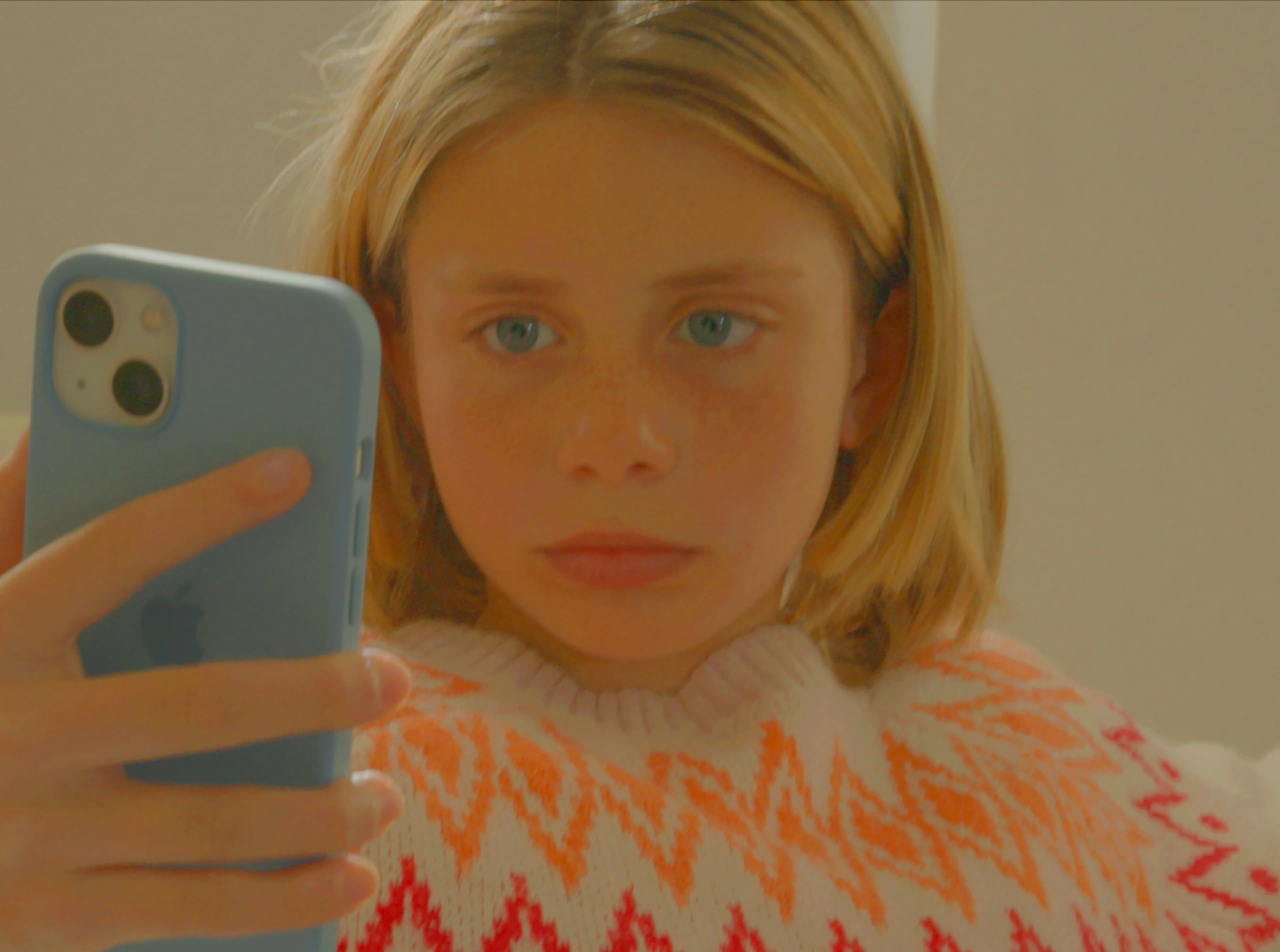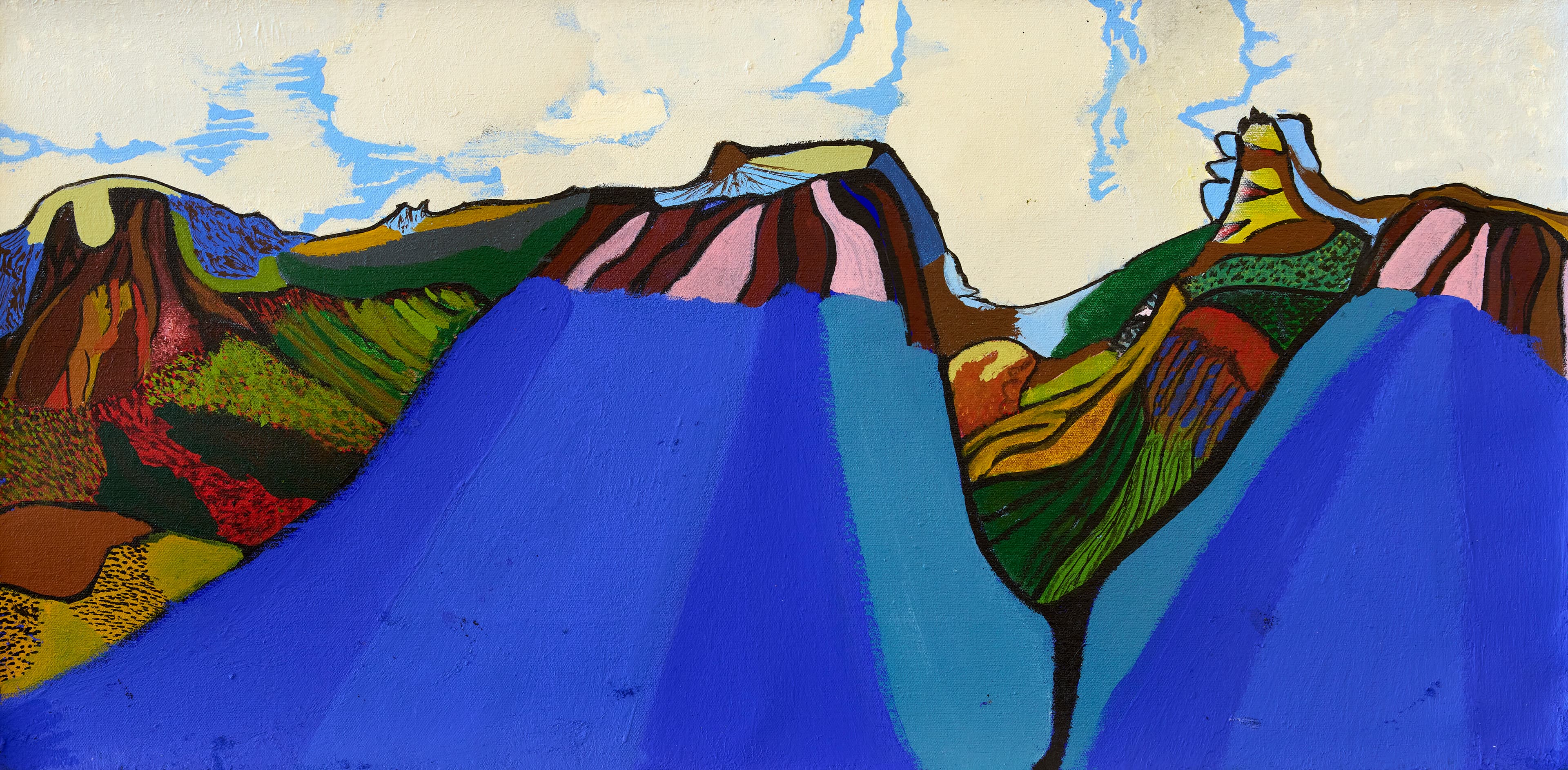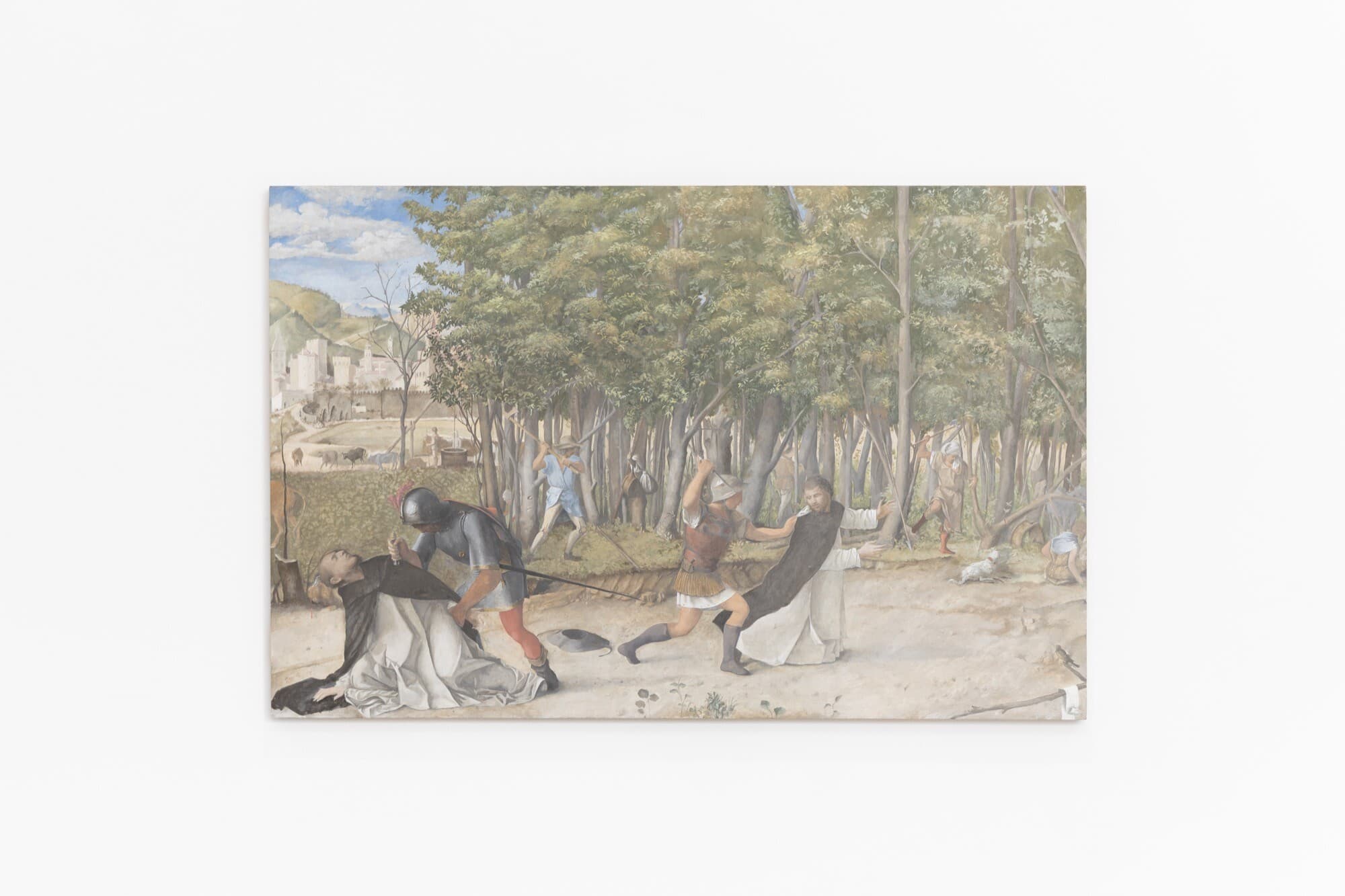Philip Guston
Cameron Hurst
In the Tate Modern’s major Philip Guston retrospective, the artist is quoted ruminating on his relationship to paint and processed meats. “It took me a few years to get the feeling of red, and particularly cad red medium, which I happen to love,” he says. “I like pastrami. I just like it. I couldn’t tell you why.” This non-sequitur is darkly funny to anyone familiar with Guston’s most famous paintings from the 1960s and 70s, cartoonish scenarios of white-hooded figures plotting, planning, and chilling in nondescript cityscapes and domestic spaces. These images are perturbing. For the most part, they are also completed in an instantly recognisable and undeniably pastrami-like palette dominated by reds and smeary, white-streaked pinks. In Guston’s best work, moral self-searching is inextricable from the iconography of mundanity. The quote is a sliver of what is so fascinating about his entire oeuvre: an intense interest in the sensual materiality of paint—the feeling of cadmium red pigment—combined with a free association with seemingly benign items of modern life—sliced beef—and a nod to the importance of intuition. He knows what he likes, what he is drawn to. He couldn’t tell you why. The Tate exhibition is a wallop of a retrospective: a once-in-a-generation show that deepens our understanding of twentieth-century painting and politics by bringing together a lifetime’s work by one extraordinary artist.
The exhibition, simply titled Philip Guston, arrived bearing the baggage of controversy. It was curated in collaboration with the National Gallery of Art, Washington, the Museum of Fine Arts, Boston, and the Museum of Fine Arts, Houston, and was initially scheduled for 2020. However, after the massive Black Lives Matter protests sparked by the murder of George Floyd, the institutions postponed the exhibition. The participating museums wanted to wait “until a time we think that the powerful message of social and racial justice that is at the centre of Philip Guston’s work can be more clearly interpreted.” The concern seemed to be that Guston’s examinations of white supremacy could be misunderstood as actual white supremacy. Fierce criticism ensued. “Cancelling or delaying the exhibition is probably motivated by the wish to be sensitive to the imagined reactions of particular viewers, and the fear of protest,” Mark Godfrey, one of the Tate’s curators, wrote on his Instagram. “However, it is actually extremely patronising to viewers, who are assumed not to be able to appreciate the nuance and politics of Guston’s works.” Godfrey later resigned. The postponement of the exhibition begged the question: would there ever be a time when Guston’s work would not be politically confronting? Unlikely.
Philip Guston is organised biographically and in loosely chronological order. The show didactics don’t reference current events; instead, they issue general pronouncements about how Guston’s paintings “inspire us to think about the world and how we might change it.” Some could criticise this kind of statement as being so bland as to be politically meaningless. They’d probably be right. This doesn’t necessarily mean more specific proclamations would increase the show’s political impact. Mostly, the curators avoid platitudes, providing detailed information about Guston’s life from the 1910s to the 1970s. There are no visual artworks by other artists in the show. At some points, archival materials such as newspaper clippings and magazines give a sense of historical texture, and the optional audio guide features contemporary responses from artists, musicians, and writers such as Anja Ngozi and Olivia Laing, which nudge it towards the present. Primarily, though, the focus is on bringing together Guston’s paintings. This approach encourages viewers to make up their own minds about his multivalent relevance today and consider broader questions about the relationships between visual art and politics.
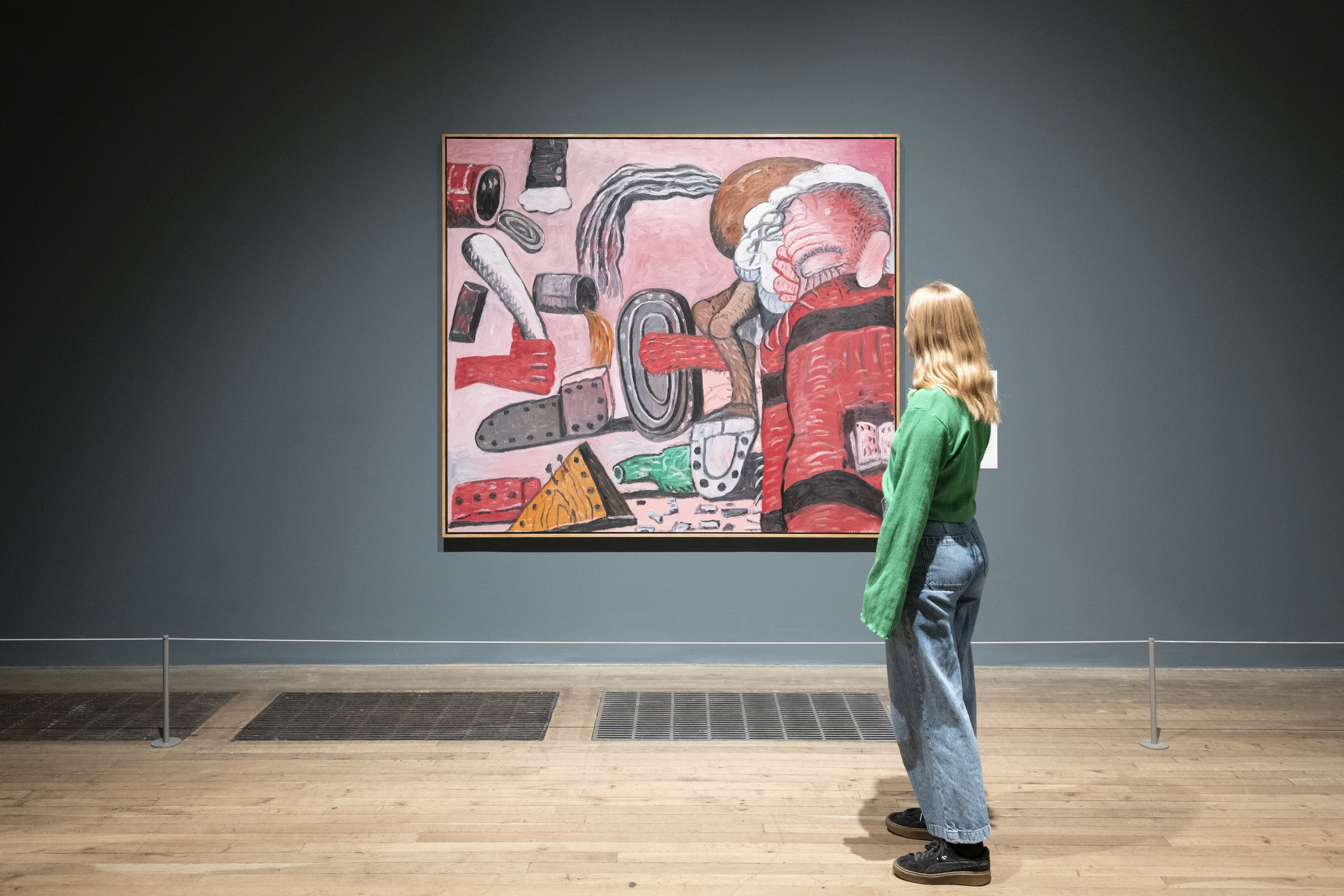
Guston was born Philip Goldstein in Montreal, Canada, in 1913, the seventh child of working-class Russian Jewish immigrants. The family subsequently moved to the US. After a traumatic childhood (Guston’s father died by suicide when he was ten; a few years later, his brother died after losing both legs in a car accident), he was expelled from school and began a career as an artist. In adolescence, Guston was drawn to Giorgio de Chirico, painting thick-thighed, cone-breasted women in eerie Surrealist landscapes. His talent as a draughtsman is evident from his earliest work. One painting, Mother and Child (1930), painted when he was just seventeen, shows a woman nursing a baby, the setting’s perspectival tilt borrowing from Italian modernism. The Virgin imagery also presages one of Guston’s lifelong interests: the Italian Renaissance. During this period, he became increasingly involved with political art groups—for example, the Bloc of Painters, a group involved in painting leftist political murals in Los Angeles. In 1933, Guston contributed to a set of murals protesting the escalating activities of the Ku Klux Klan and the wrongful imprisonment of nine young Black men in Scottsoboro, Alabama. The work was then destroyed in a police raid on a local communist club. The threat of real violence was part of Guston’s daily life. Around this time, he changed his surname in response to rising antisemitism.
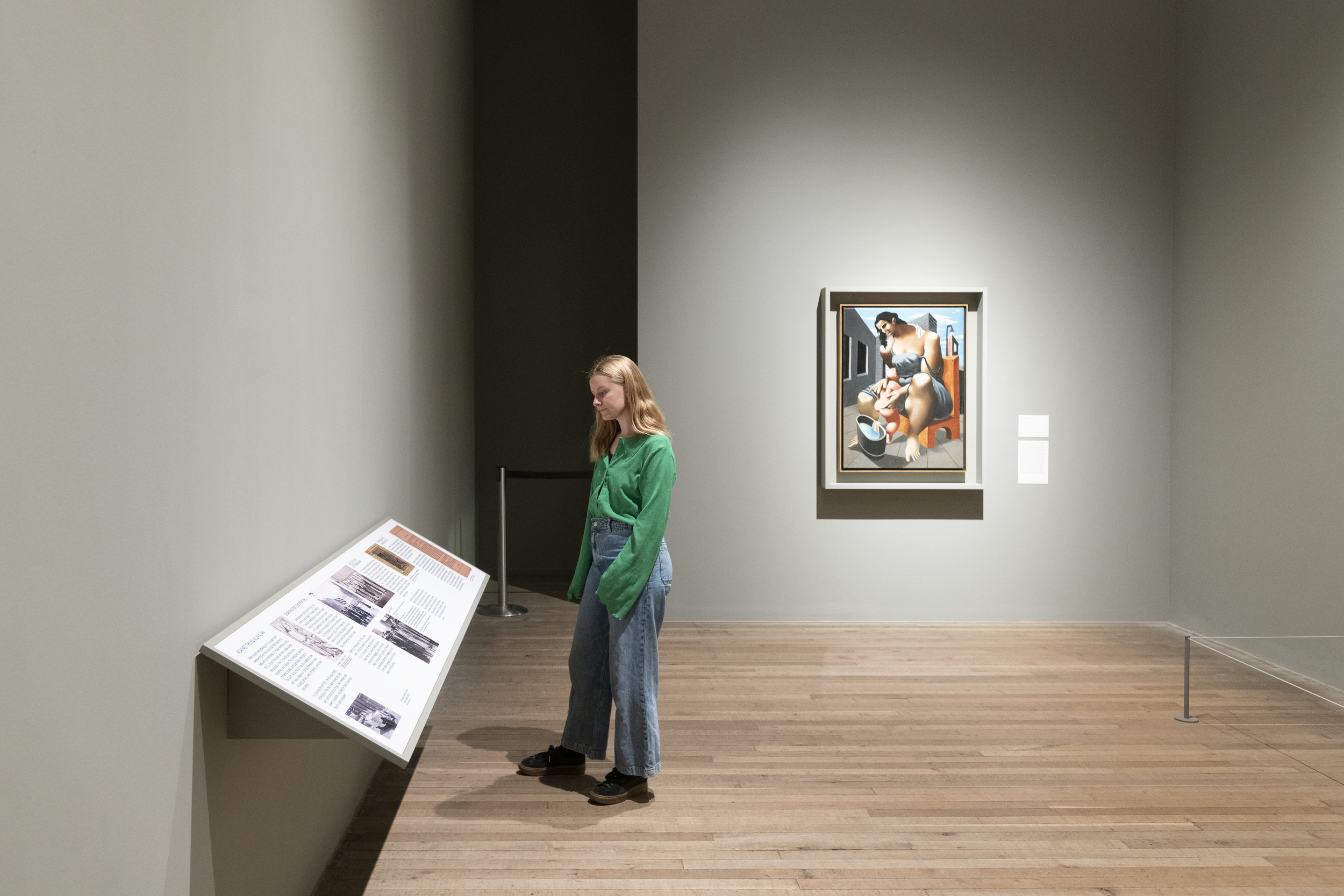
Guston’s participation in leftist political art groups reflected a larger historical movement: in the period between the two World Wars, communist parties and their cultural theorists, particularly in Europe, had a significant intellectual and aesthetic influence. Their ultimate goal was widespread political change, partly facilitated by art. Guston was a transatlantic participant in this tradition, working in a visual language that echoed social realist painting trends. He contributed to a monumental fresco mural in Mexico, known as The Struggle Against Terrorism (1934–35), which shows a pair of strong hands holding a hammer and sickle and beating down Ku Klux Klansmen. The intended message is clear: white supremacy and capitalism are entwined, and both must be overthrown. In this schema, the mural functions as a kind of communist altarpiece, an image that is intended to unify and motivate a polity, stirring up the feelings of solidarity that precipitate structural change.

In 1937, in New York, he married Musa McKim, a fellow artist and poet with whom he had one daughter. The pair spent much of the 1940s living in the Midwest, where Guston taught at universities and continued making politicised figurative paintings. But towards the end of the decade, Guston shifted away from this approach.
In the late 40s, the artist moved with his family back to New York. He joined his high school friend Jackson Pollock in painting abstract expressionist works. At this point, Guston said, “I felt that painting could respect itself, reduce itself to what was possible.” He produced scumbled, discordant compositions of sky blue, spinach green, cadmium red, orange, and every shade of grey. Guston was commercially and critically successful; in 1962, the Guggenheim gave him a mid-career retrospective. The interviewees in the Tate exhibition’s audio guide make some mildly compelling theoretical arguments about the interplay between figuration and abstraction during this phase—whether the blocky, head-like patches of paint in the centre of some canvases demonstrate the impossibility of ever achieving pure abstraction—but ultimately this phase is most interesting in terms of its relationship to his other paintings.
Looking at many of the works in the first half of the Tate exhibition, I was reminded of the debates about the relative merits of figuration and abstraction in every modern painting scene in the mid-twentieth century. (In Australia, the most famous rift was between the “Antipodeans” and the “Sydney Nine.”) Nobody would care much about Guston now if he had stuck with abstraction—the works are technically skilled, but I find most of them quite ugly. A photograph of the Guggenheim installation is reproduced in the Tate exhibition. The black-and-white print shows smeary canvas after smeary canvas lining the iconic curved walls; it’s striking how same-y these paintings look. And many of Guston’s early social realist-ish paintings border on modernist kitsch. At times, they’re reminiscent of paintings that line the state museums of former communist countries or the worst works of the Antipodean, Heide-adjacent group. They are primarily of interest to us today because motifs such as the white hoods appear in Guston’s work decades later, like unsettling memories of the KKK members he encountered in his youth resurfacing. One gets the sense that if Guston had pledged allegiance to either major movement, he might have been remembered as a minor player. But he was never going to be a defining figure: a Pollock or a Diego Rivera. He is revered now because, in the late 1960s, he decided to completely alter his approach once again.
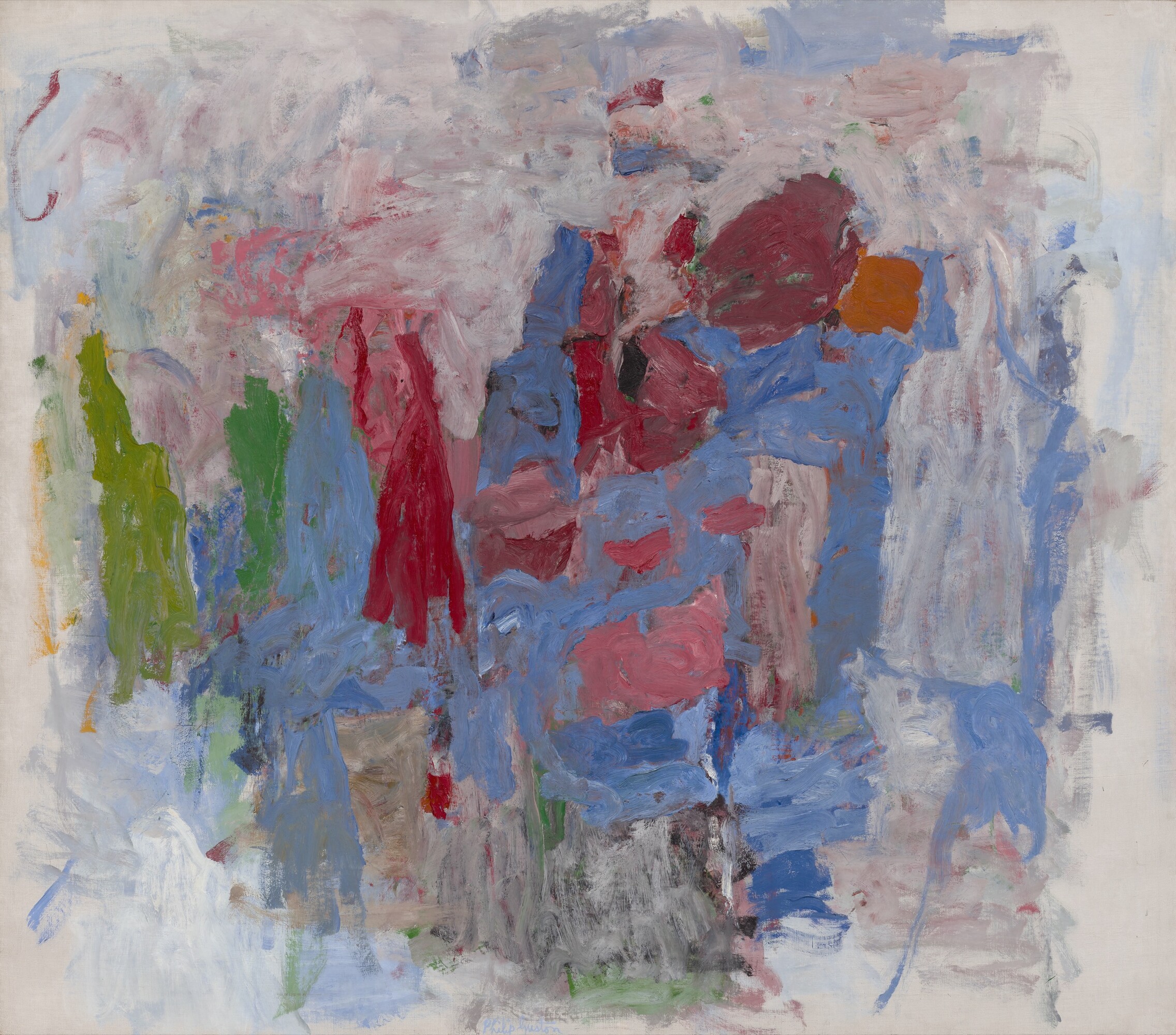
The curators characterise the shift as Guston’s soul-searching turn away from the political inefficacy and moral blindness of abstract painting. Guston declared: “The war (in Vietnam), what was happening to America, the brutality of the world. What kind of man am I, sitting at home, reading magazines, going into a frustrated fury about everything—and then going into my studio to adjust a red to a blue?” In this stage of his career, which takes up the second half of the exhibition, he produced a body of work that turned half a century’s worth of political fixations and stylistic experimentations into a distinctive deluge of images. The results were Renaissance pulp, as though Arma Christi icons had fused with anti-racist R. Crumb cartoon strips, or Piero della Francesca collabed with Krazy Kat. A key event that marked the transition was Guston’s divisive 1970 solo show at the Marlborough Gallery, a commercial space in New York, where the artist unveiled his new mode. At first, critics hated these works, thinking Guston had betrayed abstraction. One stinging reviewer in the New York Times wrote that the show epitomised an artist “who is so out‐of touch with contemporary realities that he still harbours the illusion his ‘act’ will not be recognized as such.” Evidently, he was in touch with the realities of the future—now, the period is considered Guston’s most important. “A lot has been written about the Marlborough paintings, but every explanation by definition reduces their juicy amorality and jury-rigged theatrics, their bathos and black humour, to a smouldering cinder,” Harry Cooper writes in the catalogue. He’s right.
In the Tate show, a salon hang of small paintings sets out the various discrete motifs that Guston would return to repeatedly in this phase: a lightbulb hanging on a string, bricks, city towers, disembodied legs and feet, nails, timepieces, blank canvases, paintings hanging on walls, cars, and the infamous figures in the white hoods. The hoods are always depicted with two perky vertical slits where the wearer’s eyes would be, such that each garment is anthropomorphised. They are perversely cute. White hoods obviously signify Ku Klux Klansmen. They also function for Guston as a symbol of “Evil” more generally. The artist became fixated on inhabiting evilness: “I almost tried to imagine that I was living with the Klan. What would it be like to be evil? To plan and plot.” He recognised the hoods’ social nature (often depicting them in groups) and imagined them in uneasily familiar domestic scenarios (one is shown easel painting). His taxonomic set of icons recur in many configurations. In City Limits (1969), three hooded fellows trundle along a city road inside a naively painted car with misshapen, asymmetrical wheels. One of them puffs on a big cigar. They’re depicted as sweet and funny-looking, which makes the blood spattering their robes all the more unsettling.
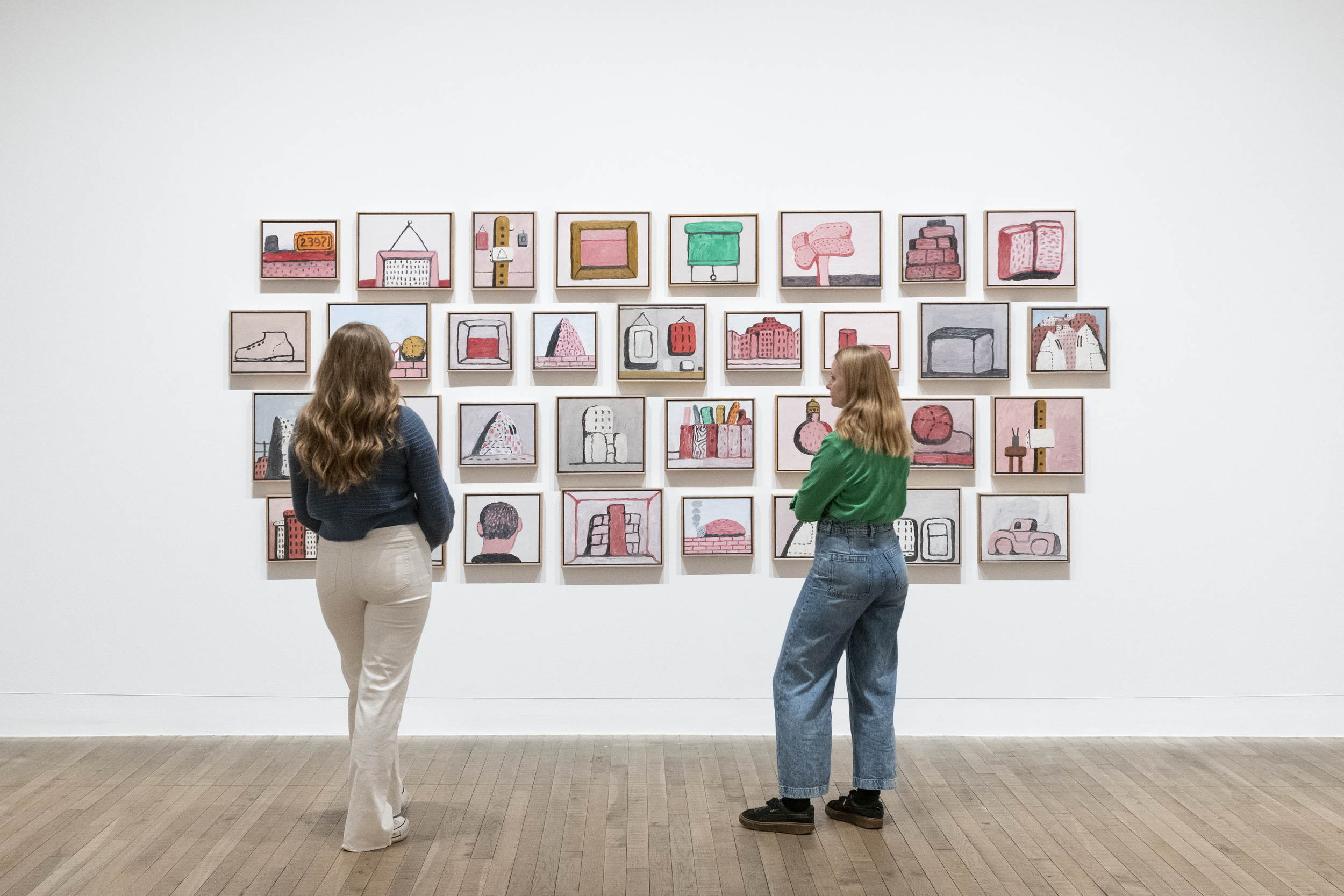
Although he was returning to politicised figurative painting, Guston had never stopped participating in practical political organising (for example, he served as the co-chair of the organisation Artists for CORE (Congress of Racial Equality) in 1966). But it would be not quite right to think that, after the crisis of the late 60s, Guston made a triumphant comeback to the militant agitation of his youth. He basically did keep going into his remote studio to adjust a red to a blue (or, more likely, a pink), except the end goal was to finesse his hood scenarios, not tweak abstract compositions. Guston’s late paintings are political but not intended to function like the earlier works. Compare the first round of figurative painting, which was tormented, ideological, and referential, with the second. The phrase “first as tragedy, then as farce” comes to mind.
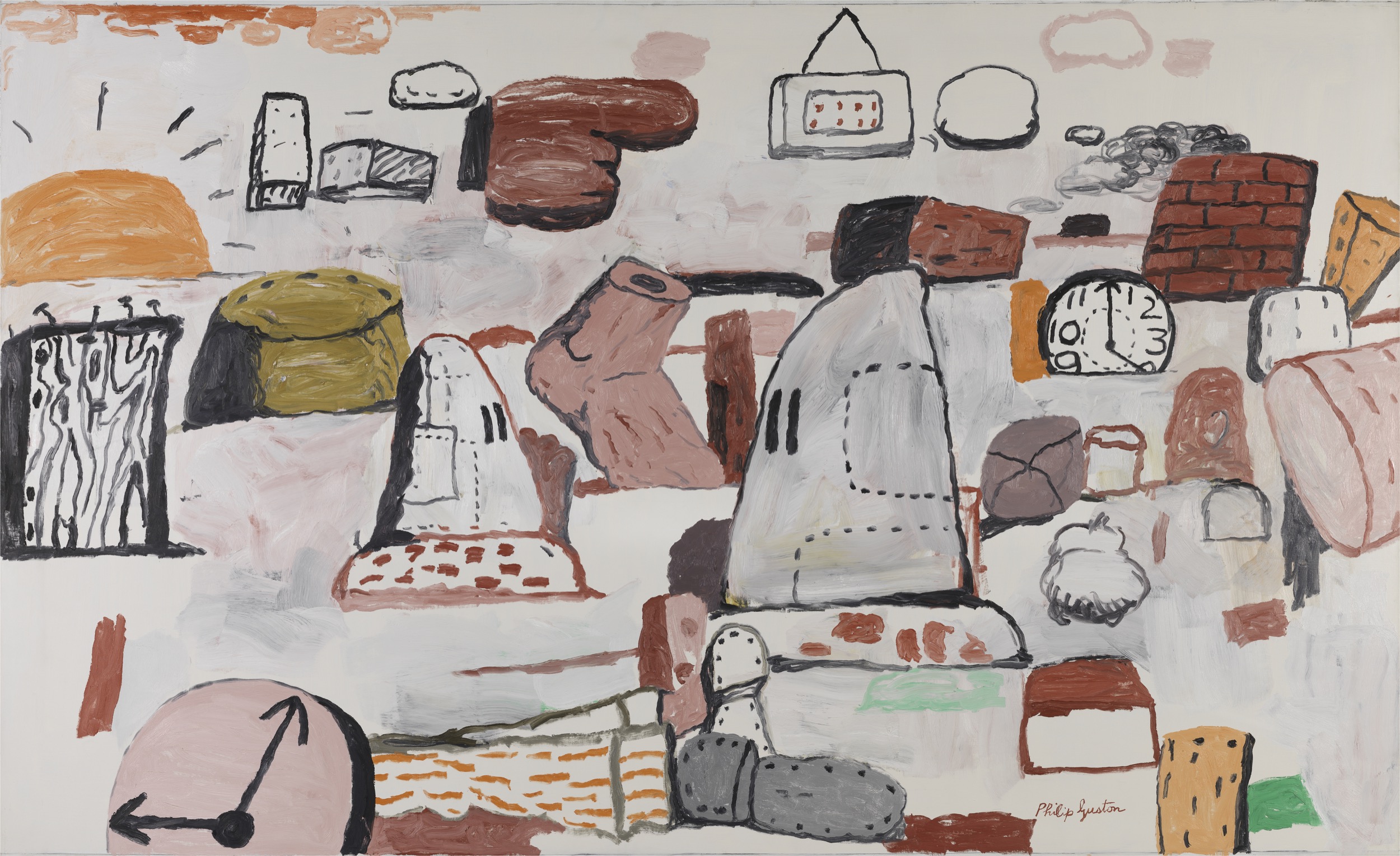
Guston’s later paintings seem to function more to channel the psychic landscape of a politically engaged life. He represented a type of modern subjectivity produced in response to a globalised, violent, image-saturated world. Look at a painting like Flatlands (1970): it’s like entering someone else’s nightmare, filled with an erratic mass of esoteric symbols. The painting encourages us to position ourselves as a participant in the scene and to try to decode the potential meanings of each icon and its relationship to the others. The anachronisms are striking—hoods glide purposefully in opposite directions, a cheery sun rises, a blood-stained, disembodied foot is depicted mid-stride, and clocks are set to different times. The painting reminds me of the absurd experience of opening my phone and encountering a morass of terrible images side by side with utterly inane ones: the severed leg of another child slaughtered in Israel’s assault on Gaza, an exhibition opening drinks, a groyper meme, an ad for a sippy cup water bottle, a techno gig poster, another conspiratorial infographic, more bombs, more statistics, more rubble, more blood, more screaming, more girls talking about their five-step skincare regime, Joe Biden with red laser beams shooting out of his eyes. How are we supposed to make sense of this world—let alone play a part in changing it?
Guston never let nihilism consume him. Nor apathy or cynicism. He seemed to be cognisant of the bizarreness and near-futility of political art whilst also compulsively reiterating its necessity. His entire lifetime was spent in opposition to white supremacy, racism, fascism, and class inequality. Yet the Tate show leads me to conclude that sometimes—often—political art does not lead swiftly or neatly to desired political outcomes. Rather, Guston’s late paintings are powerful because they create a place to confront civilian moral culpability, grief, identification, and the overwhelming political powerlessness of the individual. To try and see clearly. From there, pragmatic, collective organising outside the gallery becomes possible. Guston once spoke about how he had thought intensely about a small group of people who had escaped the Treblinka concentration camp: “Imagine what a process it was to unnumb yourself, to see it totally and to bear witness. That’s the only reason to be an artist: to escape, to bear witness to this.” The critic Olivia Laing writes that Guston “didn’t mean escape as in run away from reality. He meant act…. He meant cut through the wire.” But for all of Guston’s commitments to being on the side of liberation movements, he never deluded himself about the indulgence of wallowing in horror at the state of the world from his home in upstate New York. See, for example, Painting, Smoking, Eating (1973), where Guston paints himself lying in bed, surrounded by piles of random crap, depressed, chain-smoking, and eating chips. Same, bro.
One of the most moving paintings in the show is perhaps its least politically obvious: Couple in Bed (1977). Guston and his wife, Musa McKim, were both unwell towards the end of their lives. In 1977, McKim had a stroke that affected her cognitive functioning—a development the poet experienced as devastating. Guston became her carer. Paintings from this period show him grappling with this altered dynamic. McKim had frequently appeared in his work in the past decades, usually in a recognisable, iconic form: a forehead with wavy hair parted down the middle. Sometimes, her eyes were visible. She was always an active presence, an equal and an interlocutor. One got the sense from the show that their relationship had been rocky at times but had ultimately settled into mutual respect. McKim spent decades supporting Guston through his turbulent career. Then, at the end of her life, she became more dependent on him than ever.
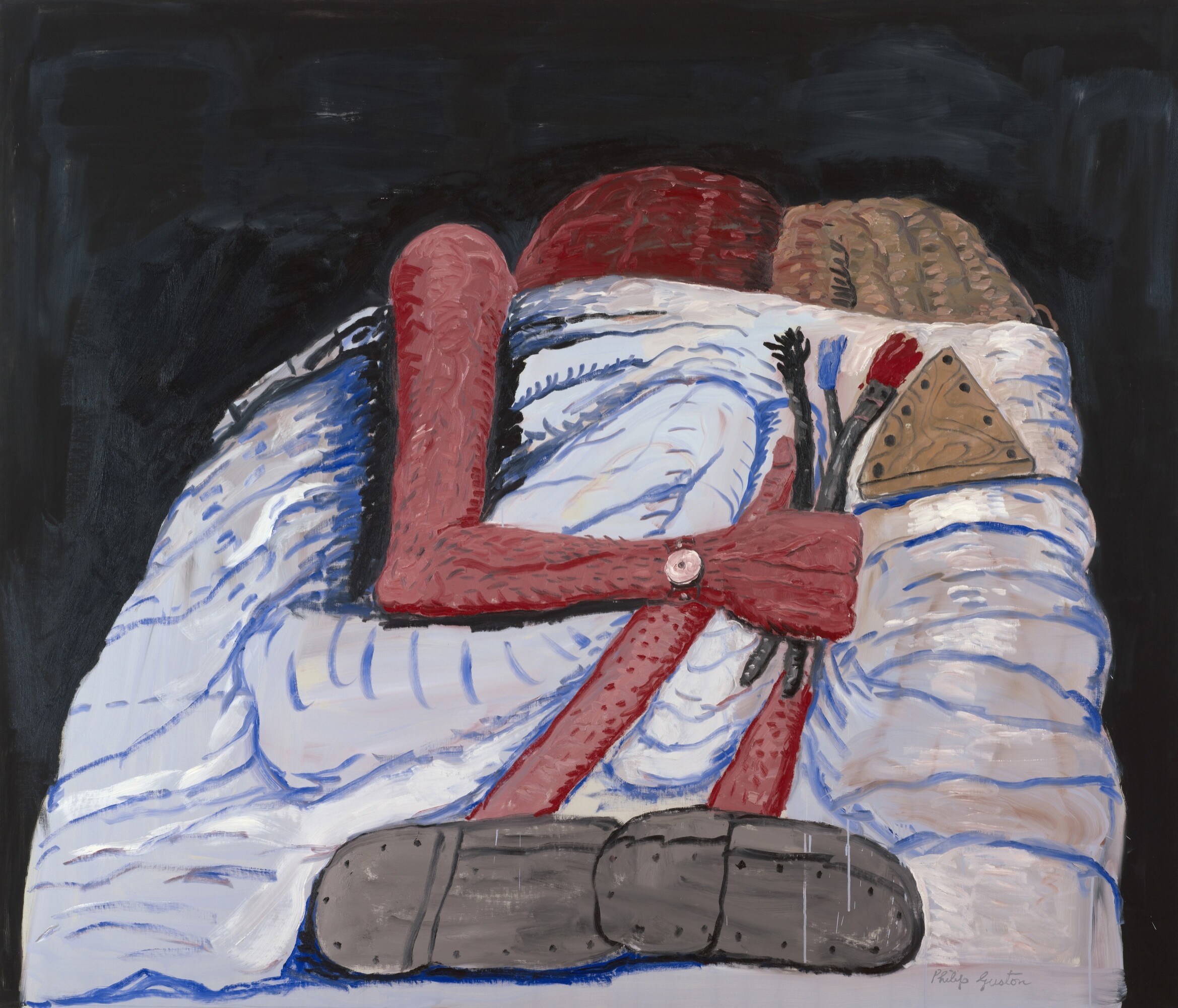
In the painting, pale blue sheets demarcate a double bed floating in a dark, amorphously smudged background. The bed looks like an island in a malevolent void. A couple—Philip and Musa—face towards one another on the mattress. Unlike in the earlier paintings, Musa’s subjectivity is hidden from us. She lies on the right side of the bed, facing inward, and her face is tucked carefully beneath the sheets. She is protected by Philip—both by how he has represented her and within the world of the scene. We can’t see Philip’s face either, but it is clear that his forehead is pressed to Musa’s. Their heads seem almost soldered together. His bony, hairy right arm, complete with the ever-present wristwatch (he is always marking time—why?), extends across the sheets. He’s more on her side of the bed, but it doesn’t look like he is thoughtlessly edging her off the mattress in his sleep. His bony, hairy legs are poking out of the sheets, and his shoes are still on. They’re huge, grey, clunky. They demand to be noticed. He is also still gripping three paint-loaded paintbrushes. What do these details suggest? Maybe that he is not yet ready to finally go to bed for the evening. Rather, it’s as if he has come in from the studio late at night, just for a moment, to check on Musa while she sleeps. This is a Couple in Bed, but it is not at all sexual. Nor is it idealised. It’s a painting that captures deep intimacy between two people who have found some fragile safety together, even if just for a moment. One can imagine Guston getting out of bed, tenderly tucking the sheets back around Musa, and trudging back into the studio, to bear witness.
Cameron Hurst is a contributing editor of Memo.
